Hair Transplant for men
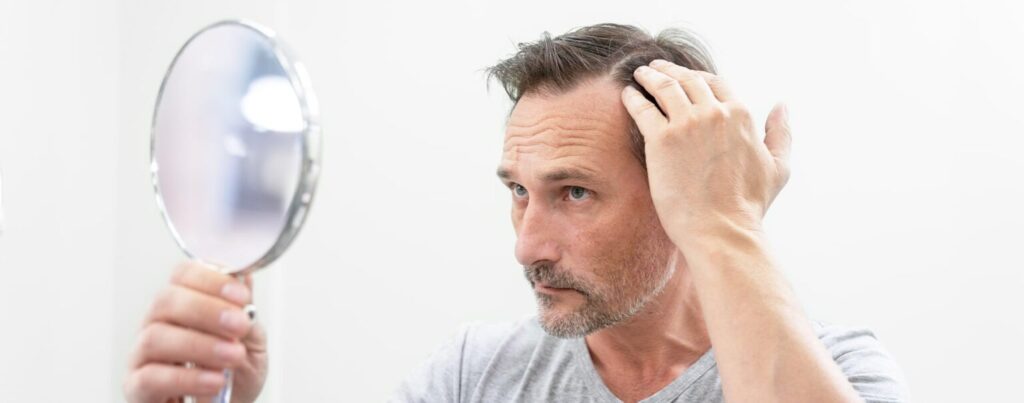
What do you know about a hair transplant Turkey? A Hair transplant has always been the best solution for hair loss and baldness. Let’s dive deeper into details about a hair transplant.
Table of contents
- What is hair transplant in Turkey?
- Why hair transplant in turkey?
- What are hair transplant techniques in Turkey?
- FUE Techniques
- Sapphire Technique
- Berkutan Technique
- OSL Technique
- DHI Technique
- Who is a good candidate for hair transplant?
- Pre-op hair transplant instructions
- How does a hair transplant work?
- Hair transplant healing
- Post-op hair transplant instructions
- Hair transplant side effects
- How long do hair transplants last?
- Is hair transplant permanent?
- How successful is a hair transplant?
- Are hair transplants safe?
- Is a hair transplant painful?
- Can a hair transplant fail?
- When is hair transplant not possible?
- Is hair transplant worth it?
- Hair transplant vs PRP
- Hair transplant celebrities
- Hair transplant cost in Turkey 2023
- Table of hair transplant costs in Turkey
What is a hair transplant Turkey?
A hair transplant is a cosmetic operation carried out by picking hair follicles from the donor area, which is the back and sides of the scalp, to be transplanted in the bald areas, which are called the recipient areas.
A hair transplant is a minimally invasive procedure done under local anesthesia. So, you can easily get rid of the baldness over the top of your head and restore healthy hair. Furthermore, a hair transplant is considered an effective treatment for people who experience hair thinning or even hairline receding.
Why hair transplant in turkey?
Turkey has been one of the best destinations for hair transplants in recent years. Every year Turkey hosts hundreds of thousands of tourists who seek to do a hair transplant. According to the Turkish health Tourism association, the turnover is expected to hit $2 billion in 2022. Let’s dive into the reasons that make Turkey a favorite country:
- The affordable cost of hair transplants in Turkey compared to the US and European countries.
- The high-quality medical services with all-inclusive packages, that involve hotel accommodation, interpretation service, and VIP transfer.
- Turkey’s superior healthcare infrastructure.
- Turkey is one of the best tourist destinations in the world.
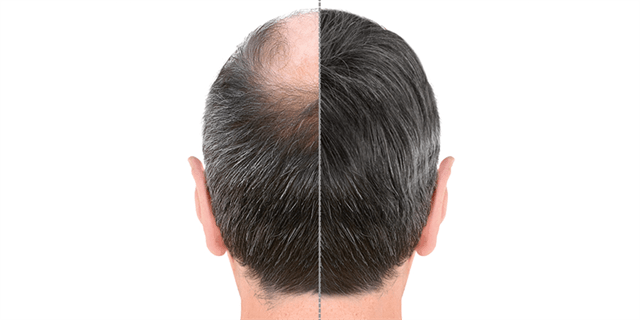
What are hair transplant techniques Istanbul?
Generally, the required number of follicles that are transplanted, differs from patient to patient according to the size of the baldness area. However, at our clinic, we use advanced techniques that can implant maximum hair follicles, ensuring the ideal depth and right direction. Let’s have a look at our hair transplant techniques:
FUE hair transplant
FUE stands for Follicles Unites Extraction. A popular technique is performed by picking hair follicles one by one from the donor areas using a micromotor, and transferring them into the baldness areas. The implant process is done by opening very tiny channels in the recipient areas using fine medical blades. At our clinic, the FUE hair transplant procedure involves three sub-techniques:
Sapphire Technique
Sapphire technique is a special FUE technique whose medical blades, which are used for creating tiny channels in the recipient area, are made of a valuable stone called “Sapphire”. By depending on this type of blade, the patient does not need to worry about the operation anymore. Thanks to the nature of the sapphire, it causes no damage or scars while the doctor makes tiny incisions in the scalp. So, it is totally safe and highly recommended.
Berkutan Technique
Berkutan method is a modern FUE technique, which aims to create very tiny channels using a microneedle made of titanium, unlike the classic FUE technique that is based on steel blades. By fine titanium needles, Berkutan technique can ensure safe transplantation with natural hair direction and depth.
OSL Technique
OSL technique is a new hair transplant procedure developed by Turkish physician Yetkin Bayer. OSL technique, which stands for Oblique Simi-Lateral is based on tiny and very sharp blades, which open tiny channels in the recipient area professionally. The operation using the OSL technique can be carried out successfully by our qualified doctors who have sufficient experience in dealing with this method.
DHI hair transplant
A DHI technique, which stands for “Direct Hair Transplant”, is one of the latest high technologies in the field of hair transplant in Turkey. It has proved its powerful potential to offer quality results for patients who suffer from hair loss since it entered the cosmetic industry.
DHI is based on a stunning implanter called “Choi Pen” by which the hair transplant specialist can create tiny channels and implant the graft concurrently. He loads the implanter’s hollow needle with the graft gently, implanting it with just one click on the plunger. The operation usually requires a couple of Choi pens and several needles for the implantation process.
With DHI, the patient can get a fast recovery and ensure no damage or scars due to using the Choi pen. Furthermore, DHI does not require shaving the recipient area, (hair transplant without shaving head) so it is an appropriate technique for people who want to keep their hair long.
Who is a good candidate for a hair transplant for men?
Not everyone is capable of carrying out hair transplantation. There are several basic criteria that the right candidate should meet:
- The patient should be over 25 years old.
- The patient should be in good general health.
- The donor area must be adequate to compensate for the baldness area.
- The patient should have serious hair loss which affects his look significantly.
Pre-op hair restoration instructions
To ensure a successful operation with satisfying results, qualified patients for hair transplantation in Turkey should follow the following instructions before the procedure:
- If the patient is a smoker, then he should stop smoking for at least two weeks before the procedure, since smoking can impact the surgery’s performance.
- Blood-thinning medications or drinks (Green tea) should be avoided for two weeks before the procedure, to prevent the patient from severe bleeding during the operation.
- Certain medicines must be stopped, including aspirins or anti-inflammatory drugs at least for a week before the surgery.
- The patient should stop drinking alcoholic beverages and caffeinated drinks, including tea and coffee for a week before the procedure.
- B or E vitamins or any type of multi-vitamin supplement containing B or E vitamins must be refrained for a week before the surgery, to avoid excessive bleeding during the operation.
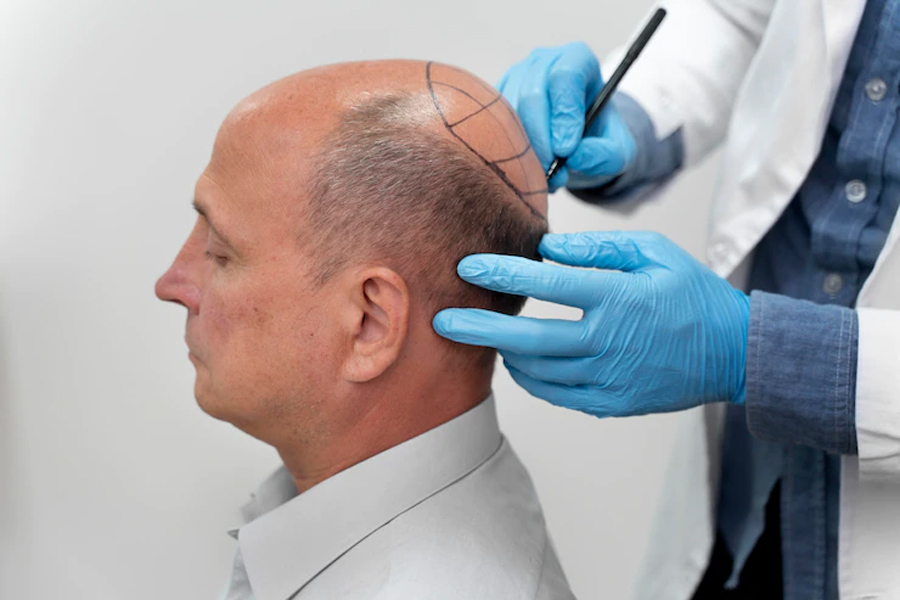
How does a hair transplant work?
Let’s have a deep look at how hair transplant procedure is performed through the following stages:
- The hair transplant begins with drawing the hairline and defining the number of hair follicles that are needed for filling the baldness area in the patient’s scalp.
- The scalp is subjected to some necessary medical tests, including blood, and dermatology examinations. Through those tests, the doctor can make his final decision if the patient can do hair transplantation or not.
- Next, if the hair transplant is performed using the FUE technique, then the patient’s head should be shaved to make the process easier. However, in the case of the DHI technique, only the donor area is trimmed, so the doctor can pick the hair follicles accurately.
- Afterward, the patient will be administered local anesthesia, which is good enough to make him feel comfortable during the operation.
- In this stage, the doctor uses a micromotor device to pick the target follicles one by one from the donor area.
- Finally, the implant process which is done under the FUE technique is different from the transplantation through the DHI technique. By FUE, the doctor uses sharp blades or fine needles to open tiny channels, then implants the grafts in the recipient area manually one by another.
- However, DHI does not require any blades, the doctor uses a Choi implant which is loaded with the graft, then by pressing down the Choi plunger, the graft will be implanted in the appropriate depth and direction.
Hair transplant healing
Once your hair restoration is done, your scalp will be covered with bandages for a couple of days. You can go back to your work 2 to 5 days after the procedure. Your transplanted hair will fall out in the first several weeks.
This is known as a hair loss shock, and it is common following a hair transplant. So you don’t need to be concerned. You will notice your hair grafts grow again in a few months. Your full hair transplant results will be seen as average in a year.
Post-op hair transplant surgery instructions
Here are some important aftercare tips that help the patient ensure ideal results and speedy recovery.
- Take the medications that the doctor has prescribed. They’ll help in your recovery.
- Keep wearing the head bandage for 2 days after the procedure.
- Don’t wash the hair or having a shower for 3 days after the procedure
- Try to keep the head straight as possible and sleep in a semi-vertical position for 5 days.
- Avoid sun exposure and bad weather for a month after the procedure.
- Don’t swim for 3 months after the procedure.
- Avoid smoking for 2 months after the transplantation.
- Stay away from strenuous physical activities for at least a week.
For more information about the best foods after hair transplantation
Hair transplant side effects
A hair transplant might be associated with the following common side effects :
- Scalp infections
- Bleeding around the microsurgical incisions in the first days after the operation.
- Scalp itching is a natural reaction to the body’s healing.
- Bruising, swelling, and pain around the scalp.
- Inflammation of hair grafts
- Numbness or loss of sensation around the surgical incisions.
How long do hair transplants last?
Your new hair follicles will start growing normally after a few months (3 to 4 months). It may take up to a year for your hair to completely cover your scalp. When it comes to the lifespan of your transplanted hair, there is no doubt that they are no different from the rest of your hair follicles. As a result, they will continue to grow naturally as they age.
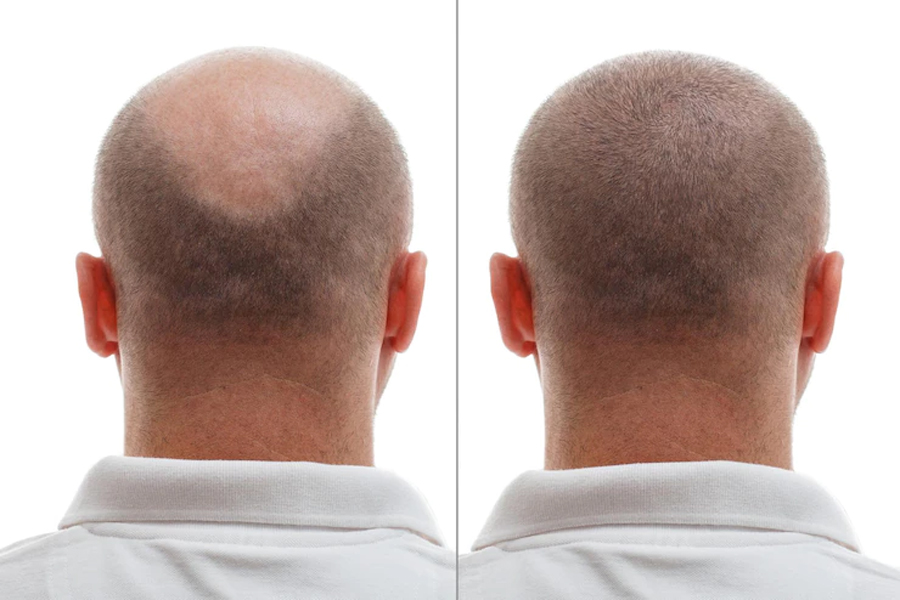
Is hair transplant permanent?
Yes, a hair transplant is a permanent procedure. Once hair follicles are transplanted, it is impossible to return them to their original location. That is why you should thoroughly discuss the hair transplant process with your doctor, including the hairline design, the needed number of hair grafts, and the expected results.
How successful is a hair transplant?
Hair restoration is a powerful and effective procedure thanks to the cutting-edge techniques used in operations in recent years. There is no reason for a hair transplant to go wrong if the patient is diagnosed professionally and is qualified for the treatment.
Are hair transplants safe?
A hair transplant is generally a safe treatment, but there is always the possibility of some complications, such as bleeding, infection, or an allergic response to the anesthesia. These side effects should be treated as soon as possible by your surgeon.
Is a hair transplant painful?
During the hair transplant surgery, your scalp will be numbed, making you feel no pain as the grafts are picked from the donor area and transplanted in the bald areas. Following the procedure, you may experience some discomfort, however by taking the medications prescribed by your doctor, you will feel better.
Can a hair transplant fail?
A hair transplant surgery can go wrong due to two main reasons. An unskilled surgeon or unfollowing post-operative instructions. Choosing the best hair transplant clinic means you ensure a skilled surgeon and the right environment that helps you avoid any risky complications that may affect the final results. Additionally, you must not ignore the instructions after your procedure, otherwise, you may put your transplanted grafts at risk.
When is a hair transplant not possible?
When your donor area, which is the back and sides of the scalp, is not good enough. The quality and number of the hair grafts in the donor area must be sufficient to perform a hair transplant, otherwise, the treatment will be impossible.
Is a hair transplant worth it?
You may hear about many hair loss treatments, such as minoxidil, finasteride, and some types of hair lotions. Indeed, those treatments may help temporarily reverse hair loss in certain cases.
However, if you look for a permanent solution to end your baldness forever, you should consider a hair transplant.
A hair transplant can help you regrow hair naturally without experiencing any discomfort, permanently cover bald spots on your head, and boost your confidence.
Hair transplant VS PRP
Platelet-rich plasma (PRP) is taken from a patient’s blood and injected into the scalp to promote hair growth. PRP treatment also can be used after a hair transplant to boost the results. It can strengthen the transplanted hair grafts, ensure faster density, and speed up the recovery.
Hair transplant celebrities
From Hollywood stars like Mel Gibson and John Travolta to football players like Wayne Rooney and David Beckham to businessmen like Elon Musk, many global celebrities have undergone hair transplants and now have natural-looking and attractive hair.
You can see the change in their before and after hair transplant photos. Of course, such celebrities would not have such wonderful results, if they did not perform a hair transplant in the right place.
So, You are strongly advised to look for the top clinic that celebrities trust; you don’t want to take your scalp for granted. Check out our website to learn about celebrities who have visited Papillon clinic.
Hair transplant cost in Turkey 2023
- When you think about performing a hair restoration, Turkey should be on your top-priority countries list.
- Turkey is one of the best destinations in the world when it comes to hair transplant costs.
- A hair transplant cost in Turkey is considered cheap compared with the European countries and the USA.
- Of course, it has nothing to do with the quality, Turkey is full of reputable cosmetic clinics which offer high-quality medical services at very reasonable prices.
- There are two crucial reasons behind the low hair transplant cost in Turkey. The low cost of living and the continuous Turkish Lira depreciation against the dollar.
- Therefore, since Turkey can offer cosmetic services at very competitive prices, it will always be the most dominant country that attracts foreigners around the world.
- Generally, hair transplant price ranges from $900 to $2500
Table of hair transplant costs in Turkey
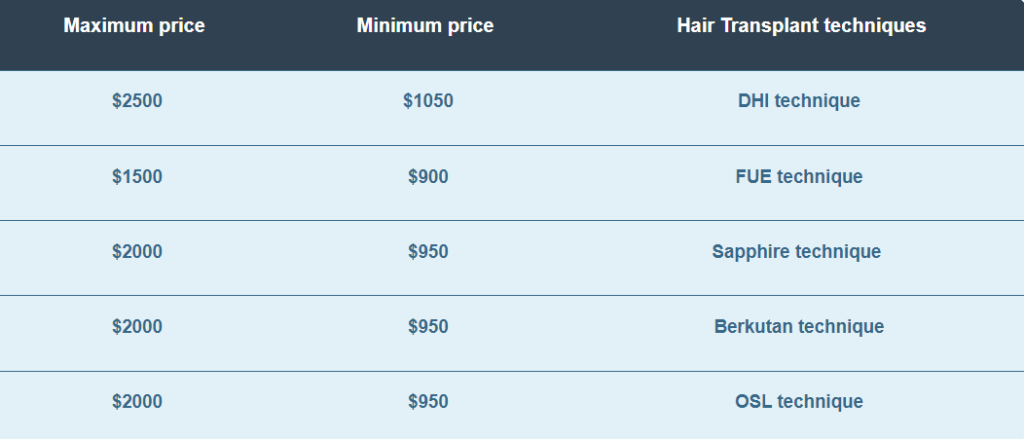
Resources
- Hair Transplants: What to Expect
- https://www.webmd.com/skin-problems-and-treatments/hair-loss/hair-transplants
- Hair transplant
- https://www.nhs.uk/conditions/cosmetic-procedures/hair-transplant/
- Everything to Know About a FUE Hair Transplant
- https://www.healthline.com/health/cosmetic-surgery/is-hair-transplant-permanent
- What You Need to Know About Direct Hair Implantation (DHI)
- https://www.healthline.com/health/dhi-hair-transplant
- Is a Hair Transplant Permanent?
- https://www.healthline.com/health/cosmetic-surgery/is-hair-transplant-permanent#permanence
- Outcome of Intra-operative Injected Platelet-rich Plasma Therapy During Follicular Unit Extraction Hair Transplant
- https://www.ncbi.nlm.nih.gov/pmc/articles/PMC5064679/
